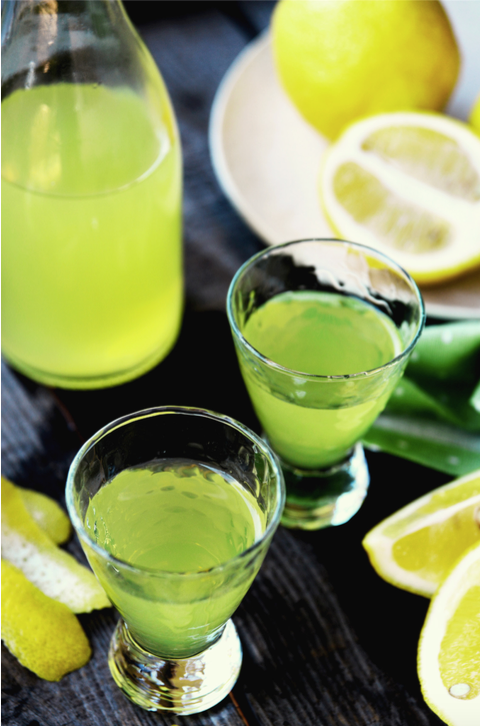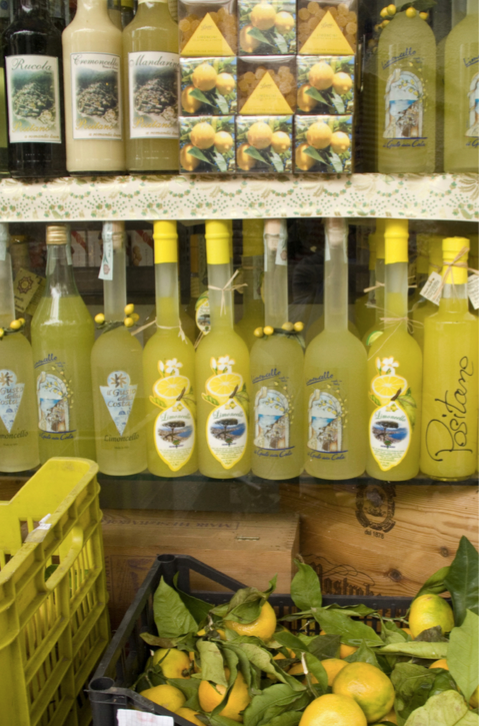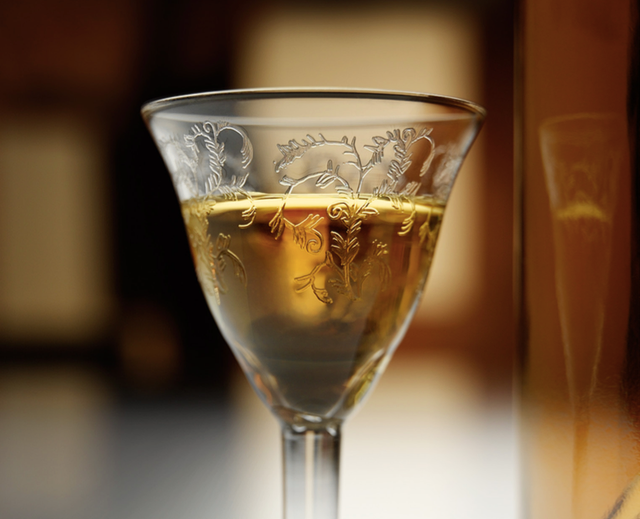
The important thing is not to get behind the wheel after you’ve enjoyed your tipple. Other than that, in Italy you have an array of liqueurs to taste. No trattoria, pizzeria or restaurant would dream of not offering patrons a high-octane drink or two after a lunch or soup-to-nuts dinner. The most popular from north to south is limoncello, but various amari—digestifs—as well as passiti, grappas, and liqueurs in various avors also top the list. There is unquestionably a tie with the traditions of the various regions (and with local ingredients like herbs, fruit, and roots), but these drinks have become popular all over the place, making things a little confusing. So various after-dinner drinks can also be found very far from the geographical area originally tied to their name.
Limoncello
At least three towns are claiming this “invention”: Sorrento, Amal and Capri. In any case, the geographical area is the region of Campania, focusing on its coastline. That’s where the best lemons grow, cultivated with a unique method: the plants are supported by ten-foot-tall scaffolding and the slant of the trunk helps protect them from bad weather. This means the fruit is less subject to damage. The rinds are macerated in alcohol for at least three weeks, and then they are blended with sugar syrup. After that, the liquid is ltered and bottled. This is the classic after- dinner drink in Italy, and you should de nitely try the original, especially if you’ve tasted its more recent Californian spinoff.

Amaro
The name—which means “bitter” in Italian—already tells you a lot about it. It is a drink with a bitter taste, made mainly by distillation or maceration, and its main ingredients are plants: roots and medicinal herbs that are left in an alcohol solution for months. Centerbe is probably the most famous amaro and originally—long before it became the popular liqueur it is today—it was even used as medicine against the plague.
Mandarinetto
This liqueur brings us to Sicily, and its bright orange color comes from one of the island’s most typical fruits, the tangerine. As is the case with other citrus liqueurs, it is served ice-cold and is especially good after lunch or dinner, but some also drizzle it over fruit salad or use it in dessert recipes. It is prepared like limoncello, but has an even more distinctive taste.
Passito
We should actually talk about passiti in the plural, because there is an entire family of raisin wines. The vini cation process is the same as the one used for “normal” wine, except that the grapes are left to wither: “appassire” in Italian, and hence the name. This process reduces the amount of water in the grapes, concentrating the sugar content, aromas, and other substances. This also leads to a higher alcohol content and the avor becomes more intense. The most famous is Passito di Pantelleria, a DOC liqueur wine produced on the island of Pantelleria off the coast of the Sicilian town of Trapani. It is perfect with desserts, but also with cheese.


